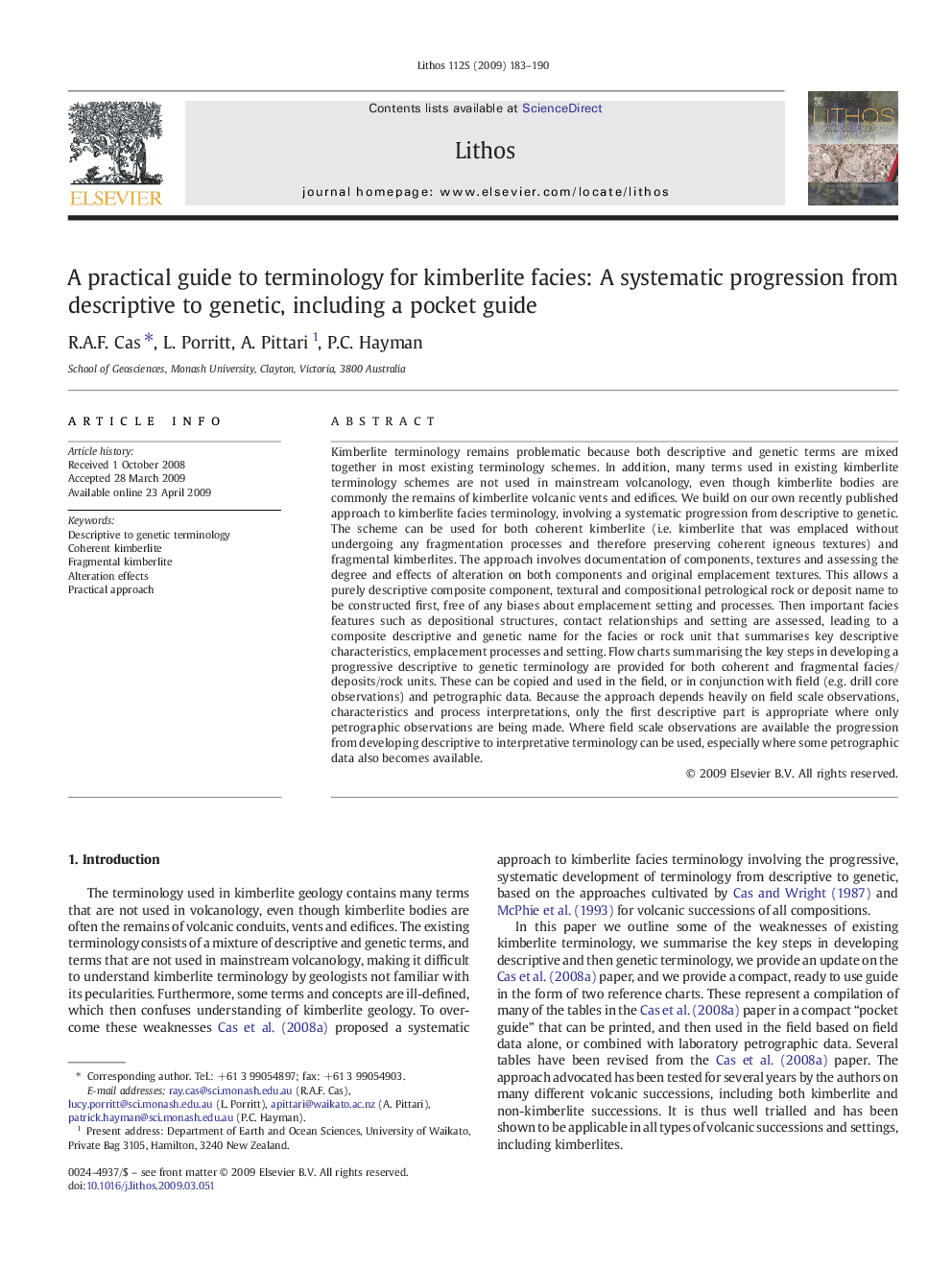| کد مقاله | کد نشریه | سال انتشار | مقاله انگلیسی | نسخه تمام متن |
|---|---|---|---|---|
| 4717259 | 1354429 | 2009 | 8 صفحه PDF | دانلود رایگان |

Kimberlite terminology remains problematic because both descriptive and genetic terms are mixed together in most existing terminology schemes. In addition, many terms used in existing kimberlite terminology schemes are not used in mainstream volcanology, even though kimberlite bodies are commonly the remains of kimberlite volcanic vents and edifices. We build on our own recently published approach to kimberlite facies terminology, involving a systematic progression from descriptive to genetic. The scheme can be used for both coherent kimberlite (i.e. kimberlite that was emplaced without undergoing any fragmentation processes and therefore preserving coherent igneous textures) and fragmental kimberlites. The approach involves documentation of components, textures and assessing the degree and effects of alteration on both components and original emplacement textures. This allows a purely descriptive composite component, textural and compositional petrological rock or deposit name to be constructed first, free of any biases about emplacement setting and processes. Then important facies features such as depositional structures, contact relationships and setting are assessed, leading to a composite descriptive and genetic name for the facies or rock unit that summarises key descriptive characteristics, emplacement processes and setting. Flow charts summarising the key steps in developing a progressive descriptive to genetic terminology are provided for both coherent and fragmental facies/deposits/rock units. These can be copied and used in the field, or in conjunction with field (e.g. drill core observations) and petrographic data. Because the approach depends heavily on field scale observations, characteristics and process interpretations, only the first descriptive part is appropriate where only petrographic observations are being made. Where field scale observations are available the progression from developing descriptive to interpretative terminology can be used, especially where some petrographic data also becomes available.
Journal: Lithos - Volume 112, Supplement 1, November 2009, Pages 183–190